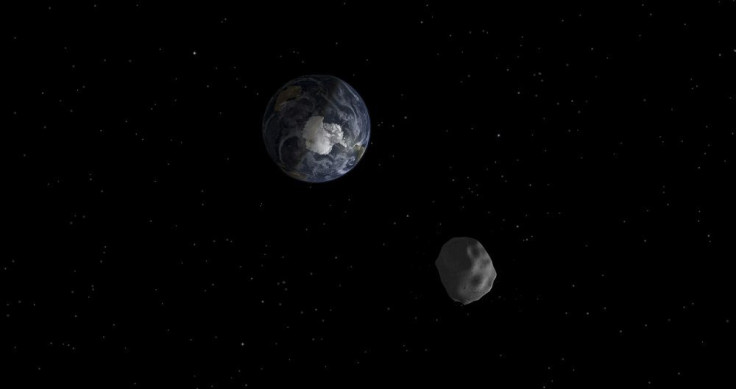NASA slams fake prophecies, says no asteroid will hit Earth in the next 100 years

The National Aeronautics and Space Administration, or NASA, finally put to rest the rumours that a comet will hit Central and South America in September and even in the next century.
Rev. Efrain Rodriguez, a self-proclaimed “messenger of God,” contacted NASA in November 2010 about a meteor that will destroy the island of Puerto Rico. Rodriguez’ letter to NASA , which was later posted on his Web site, claimed that God has communicated with him and gave him a message in Spanish, including two maps.
“In this message, God warns the island that an asteroid is coming, and will soon be visible in the alarm systems of NASA, and the computer scientists and observers of the world will see it,” Rodriguez wrote.
Rodriguez also urged the space agency to alert the people of Puerto Rico and relocate them somewhere safe, as “an asteroid collision is imminent at any time” in the island, but did not say exactly when. Several versions of the “prophecy” littered the Internet, catching the attention of the vulnerable. A blog post announced that the comet will hit on Sept 24, 2015, while others predicted its arrival between Sept 15 and 28, 2015.
“There is no scientific basis - not one shred of evidence - that an asteroid or any other celestial object will impact Earth on those dates,” said Paul Chodas, manager of NASA’s Near-Earth Object office, in a statement .
Near-Earth Objects (NEOs) are comets and asteroids that stray near the Earth due to other planets’ gravitational force. The NEOs Observations Program, headquartered at the Jet Propulsion Laboratory in Pasadena, California, is a group composed of astronomers and scientists from different countries who search the sky for meteors that may harm the Earth.
“If there were any object large enough to do that type of destruction September, we would have seen something of it by now,” Chodas said. The agency further assured that all known Potentially Hazardous Asteroids have less than 0.01 percent chance of impacting Earth in the next 100 years
The NEO Observations Program is commonly called “Spaceguard” as the group behind it track and identify asteroids and comets passing 30 million miles of Earth. The program’s discovery teams use both ground- and space-based telescopes to predict the NEOs’ path and impact.
NASA has been conducting various space explorations to figure out the unknown outside the Earth, but one subject that still baffles scientists is the existence of antimatter. Antimatter has the exact opposite properties of normal matter, which means that the two should’ve been created in equal amounts after the Big Bang, according to theory. Add to this the fact that when matter and antimatter collide, both will be destroyed by their extremely high-energy gamma photons.
But the search for antimatter will no longer be a hopeless journey, as a new telescope that can detect antimatter joins the search. The Santilli Telescope is equipped with both convex lenses for images of matter-light, and concave lenses for images of antimatter-light. Thunder Energies Corporation ( OTCQB: TNRG ) will make the Santilli telescope available to professional and amateur astronomers all over the world.
“We are glad to announce the search for antimatter galaxies alongside with the search for extraterrestrial life, dark matter, and dark energy because our knowledge of the universe is insignificant compared to what remains yet to be discovered,” Dr. R.M. Santilli, chief scientist at Thunder Energies, said in a release .
According to Dr. W. George Gaines, Thunder Energies’ COO, the Santilli telescope will “pull back the curtain of the heavens,” allowing astronomers to obtain photographs of antimatter galaxies.
Four years ago, NASA’s Fermi Gamma-ray Space Telescope, which has been in orbit since 2008, detected beams of antimatter above thunderstorms on Earth. A member of Fermi’s Gamma-ray Burst Monitor (GBM) team said that these signals are the first direct evidence that thunderstorms make antimatter. According to Space.com , this phenomenon is “too weak to be claimed as a discovery,” and that scientists and researchers still have to gather enough evidence to verify their theory.
Contact the writer at feedback@ibtimes.com.au or tell us what you think below





















